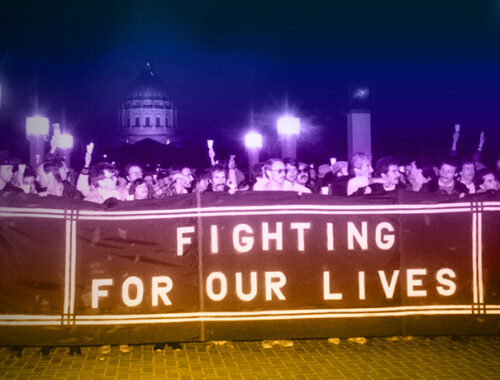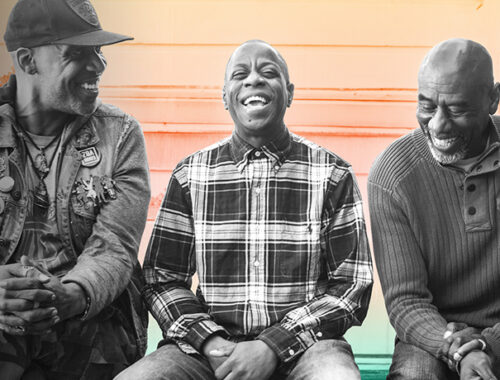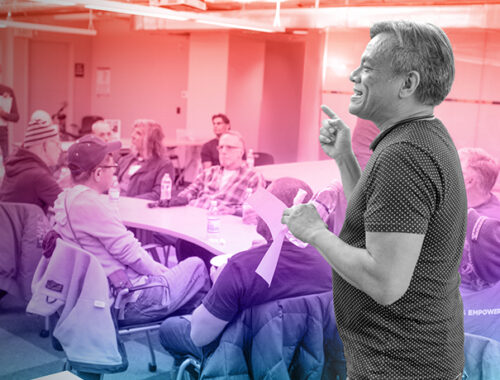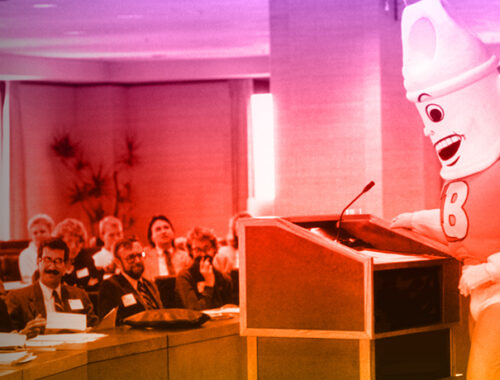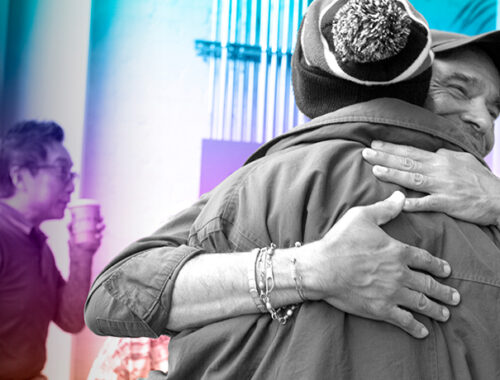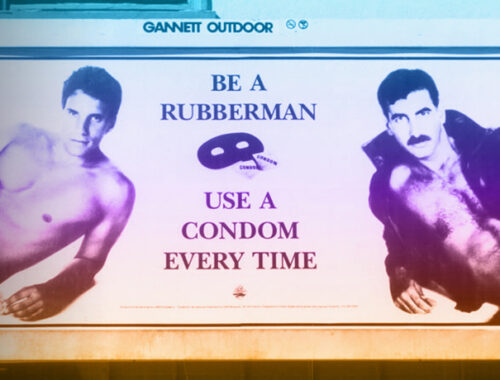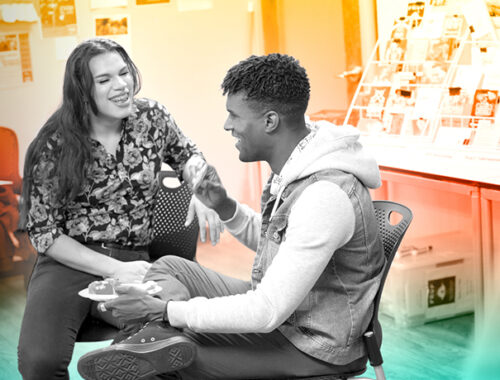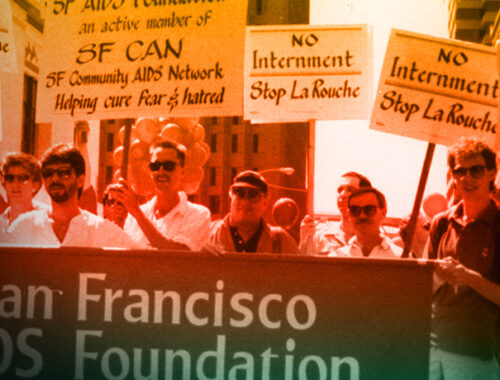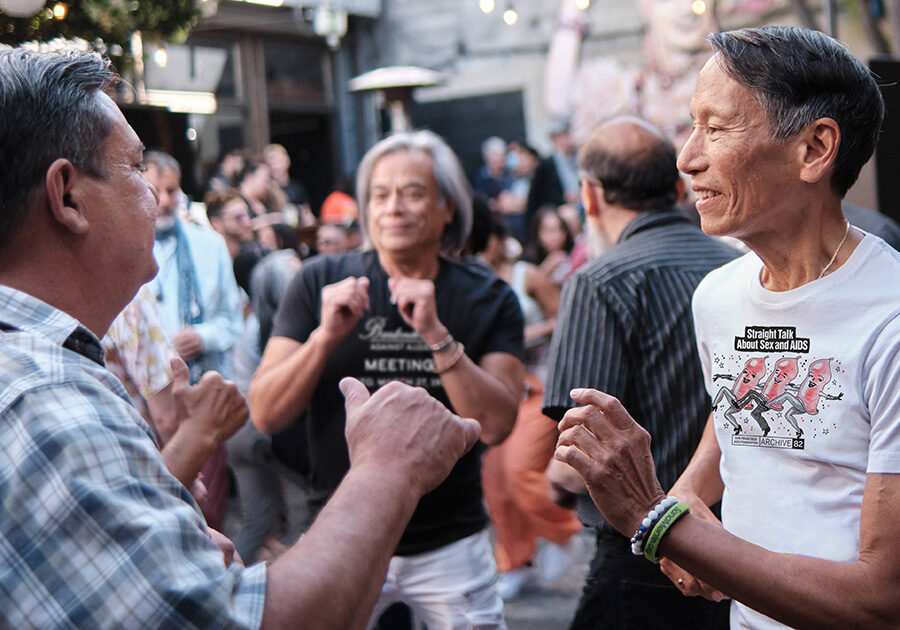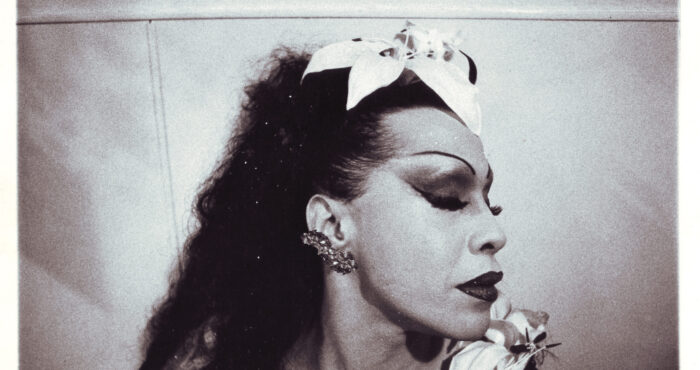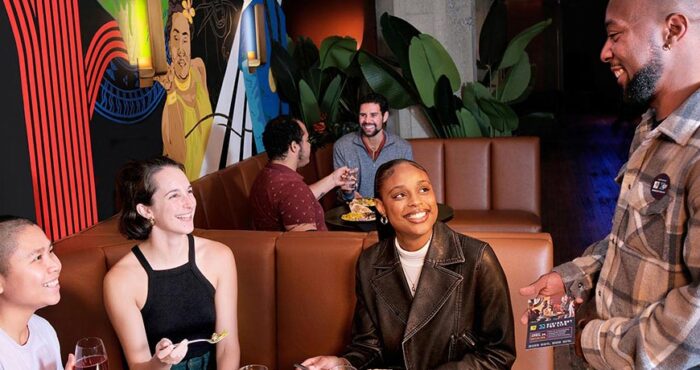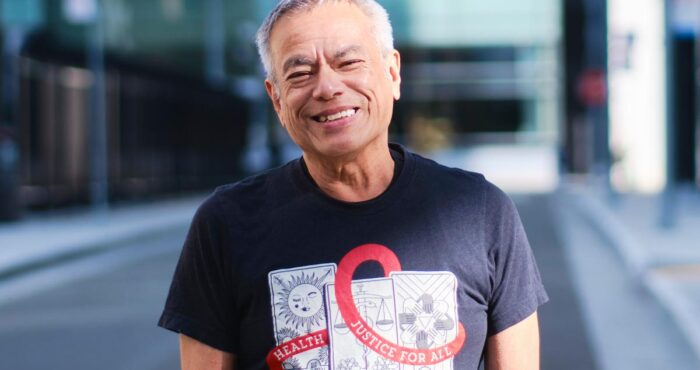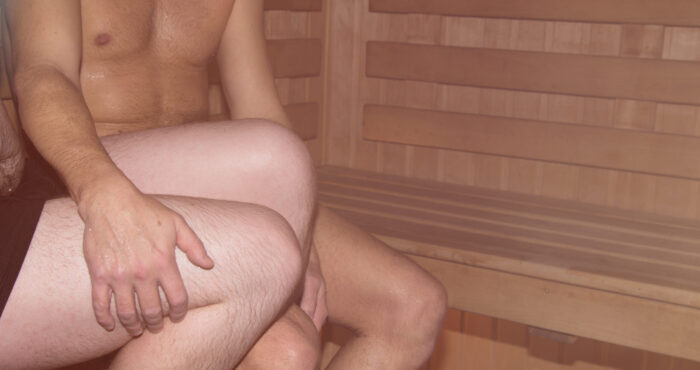From crisis to community
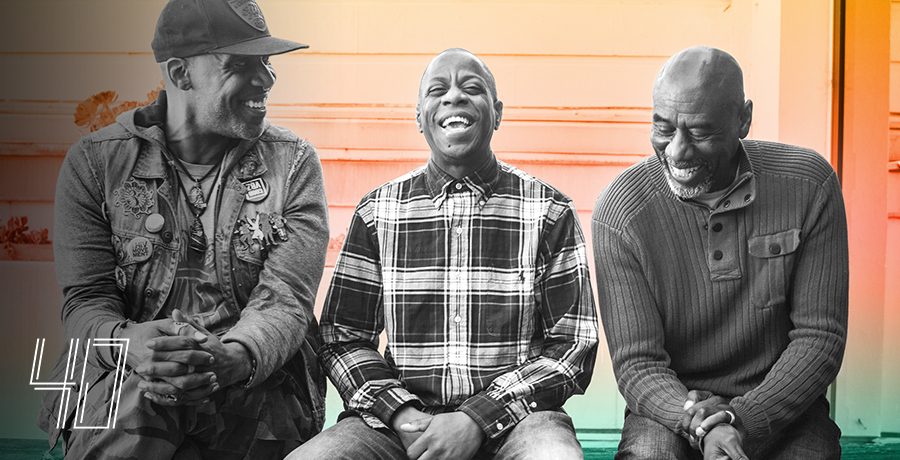
This article was produced in honor of San Francisco AIDS Foundation’s 40th anniversary, which we are commemorating in 2022.
In the early days of the epidemic, many San Franciscans with HIV and AIDS were in dire need of social, emotional, and practical support and resources. Rejected by friends and family members fearful of AIDS, many in our community came together as surrogate families and extra support in times of intense need.
In San Francisco, two peer support groups–Black Brothers Esteem (BBE) and El Grupo–were established to meet the needs of communities of color grappling with issues around HIV, sex, substance use, and health. It’s been more than 25 years (BBE) and more than 35 years (El Grupo), and both groups are still building community at San Francisco AIDS Foundation to this day.
Building community, one brother at a time
Black Brothers Esteem (BBE), established in 1996, is one of SFAF’s longest-operating groups–with some group members involved for 25 years or longer.
Martial York was one of the founding members of BBE–and still attends BBE events to this day.
“I was connecting with other people at AA meetings, and I found out that there were little groups of Black guys from the TL [Tenderloin] gathering to talk about this new disease and the treatments for it,” said York. Eventually, we came to the foundation and started meeting on a regular basis–group members came up with the name of Black Brothers Esteem.”
York remembers that when the group was first founded–just before protease inhibitors came out–the group focused on supporting people living with HIV and making sure that people were connected to care.
“There were so many folks dying that just needed support,” he said. “They needed meals, or company, or help getting to the doctor. We volunteered to be there for each other because at that time, the epidemic was raging.”
York said the group shifted focus once protease inhibitors changed the landscape of HIV. People realized they would live, and wanted to take steps to improve their lives and circumstances. People craved friendship, love, and camaraderie. BBE provided this for many people who had come to know the group as family.
“We started having functions,” remembered York. “We started getting together and doing things like going to parks. We had picnics, and started doing things as a group. I’ve been part of this group since the 1990s, and still am an active member. Just this last week, we went as a group on a bus tour around San Francisco.”
“There was a lack of community for Black gay men in San Francisco–this group helped to fill that need,” said Jamal Bey, a former program manager for BBE. “This was the first group in the city that worked with both HIV-positive and HIV-negative men. We focused on key issues around HIV in the Black community, and also other things that group members were experiencing in their lives. We talked about things like substance use, HIV, sex, sexuality, and dating.”
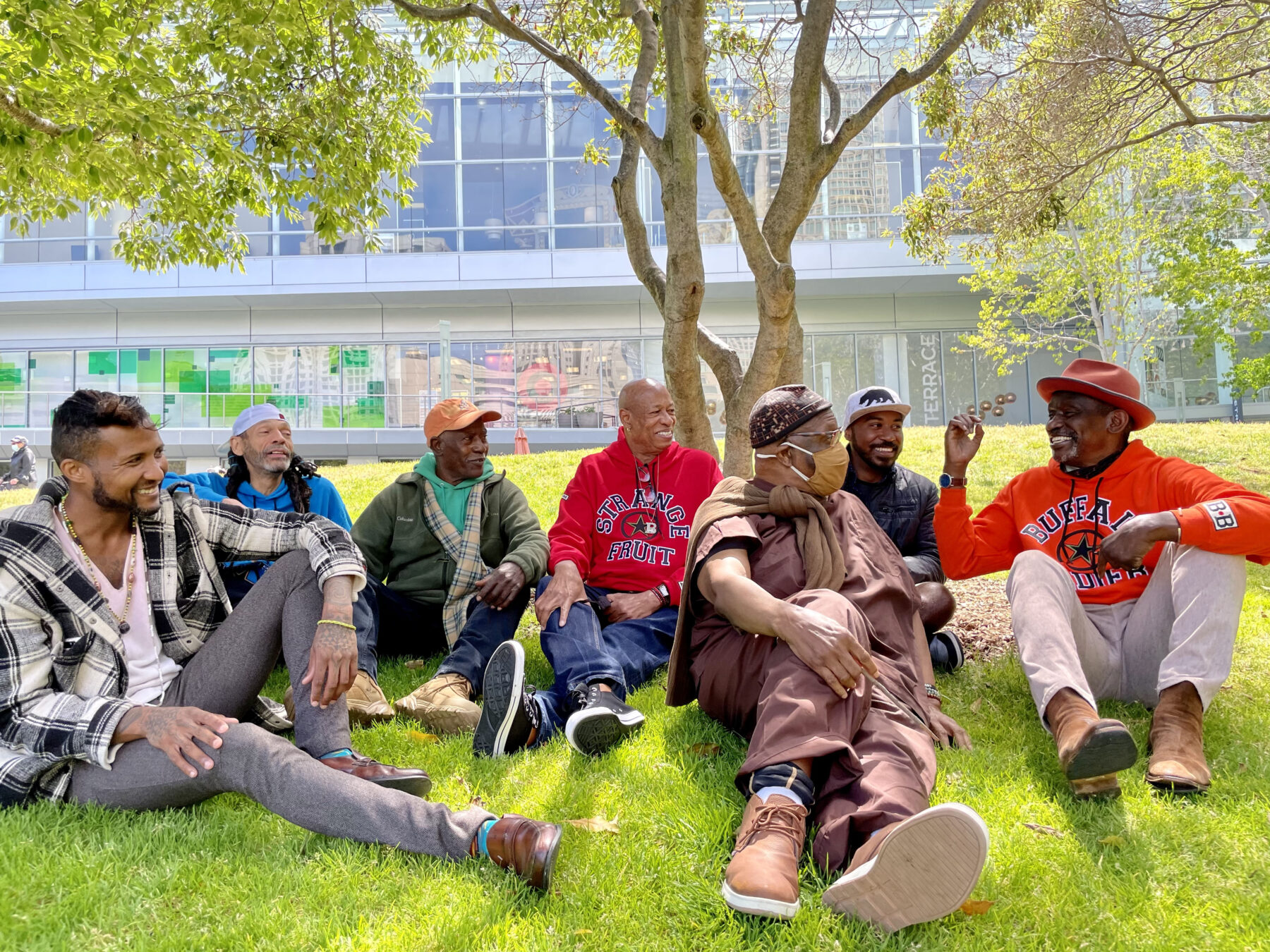
BBE, along with a complementary program called ‘Gay Life” grew out of a partnership with UCSF’s Center for AIDS Prevention Studies (CAPS). Led by Rene Durazzo, CAPS researchers did 200 one-on-one interviews in the mid-90s with gay and bisexual men living in the Tenderloin to find out more about the needs of this population.
“This was a time when we were starting to see the epidemic go down among white men in San Francisco–but increase among Black gay men in particular,” said William Bland, former prevention director at SFAF. “They did over a hundred in-depth interviews–talking to these men about what was needed. It was pretty clear that few programs existed, and that nothing was comprehensive or consistent. That’s when the foundation decided to try to create some program to meet the needs of Black gay men. BBE was born.”
“BBE was the community I’d always wanted,” said Micah Lubensky, PhD, who served as a BBE community organizer from 2004 to 2014, and who is now the Participant Engagement Director for the PRIDE Study/PRIDEnet. “When I was coming through my educational career, I was often in places where there were so few Black folks. I was very isolated as a same-gender-loving man of the African diaspora. BBE was a place where we could all be real with each other.”
Over the years, the group has embraced the resilience, spirituality, intellect, and passion of its group members–bringing people together and empowering them to shape what BBE becomes. A briefing document on the group from the mid 2000s shares that BBE’s goals around decreasing stigma associated with sexual health, and increasing other sexual and community health measures relies on group member leadership, client-driven programming, and community development initiatives.
The name of the group, Black Brothers Esteem, was decided on by group members, as was the original artwork used in the group’s logo.
“It takes a community to save a community,” shared Lubensky. “There was a lot of honesty in BBE about this. We knew Superman and Wonder Woman weren’t coming to save us. The Federal government wasn’t coming to save us. We had to save ourselves. We did the work because we believe in our community and we believe in helping our community. BBE became an oasis and a place of safety for the Black LGBTQ community in San Francisco.”
Bland, who oversaw BBE in the 2000s, said the program was strengthened by the many Black gay leaders who contributed to the program over the years.
“People could see who was part of the program, and they were really motivated and inspired by that,” said Bland. “The brothers really did step up. They had a steering committee that was meeting monthly and running things. [BBE members continue to lead a steering committee to this day.] We had a real level of leadership. I saw people develop a greater sense of agency–and know that they could move beyond their circumstances. I was struggling with some of the same things, as a Black gay man in San Francisco. I brought that in, and I think they really appreciated that there was that commitment to them as brothers. That’s what was really special.”
The cornerstone of BBE was, and continues to be, the support group Phoenix Rising, which has been meeting regularly since the beginning of BBE. Bland also oversaw the development of other parts of the program, including community gatherings, workshops, one-on-one counseling, and leadership retreats.
“As a Black gay man living with HIV myself, I tried to think about, ‘What are the things that have been helpful to me, my growth, and my development?’” said Bland. “And I used that during my work with BBE. We did things like hold retreats. Members that participated in workshop sessions and participated in skills development would then be invited to attend a retreat where we would do even more in-depth work and build skills. We started a Brothers In Worship series, where we put together a resource guide around culturally sensitive spiritual resources. And we held a Colors of Recovery support group, for brothers that were specifically dealing with substance use issues.”
Lubensky remembers the incredible group of Black gay men he worked with during his time with BBE, whe elevated the presence and impact of the group through their dedication, passion, and insight.
One series of projects in which Lubensky collaborated with BBE program participants was “Photovoice.” The multiple month-long projects showcased the artistic talents of BBE group members in community displays across the City. In a year before camera phones became commonplace, BBE members learned photography and lighting skills and used disposable cameras to document vibrant scenes from their lives related to health maintenance themes. BBE project participants then jury selected final exhibit images, and interviewed artists to compose accompanying statements for each photograph. The two separate exhibits were displayed on large gallery walls in community spaces across the city such as the main branch of the public library and UCSF. The second exhibit was displayed at UC Santa Cruz.
“To this day, the work we did with BBE is some of the work that I’m most proud of in my career,” he said.
Bland echoed a similar sentiment. “We were really building community and connection. That’s what I’m most proud of.”
El Grupo de Apoyo Latino
El Grupo de Apoyo Latino, established more than 35 years ago, is another long-lived and well-loved community program of San Francisco AIDS Foundation.
The group’s founding goes back to the living room of San Francisco resident Fernando Castillo, who opened his home early in the epidemic to friends dying of AIDS. In a time when most people were fearful, Castillo said he was not afraid. He was only heartbroken, and motivated to care for his friends in the best way that he could.
“We formed an inclusive group,” he remembers. “We were all ages and races–Black, white, Asian, Latino. But we called it ‘El Grupo’ because there was such a taboo around AIDS at the time. So we could talk about it–we could ask each other, ‘Are you going to El Grupo?’ Without saying what the group was about.”
The group met regularly on Thursdays, and Fridays were reserved for doctors appointments at San Francisco General Hospital’s Ward 86. “We used to live at that hospital,” remembers Castillo. “So many of our friends had to go there–and unfortunately, that’s the place where I lost most of them.”
Castillo showed his devotion and care through his food. An experienced restaurant chef, Castillo realized the special food needs of his sick friends.
“I cooked a lot of stews and soups—nutritious things that people could eat,” he said. “Many of them had thrush, so they had trouble eating. I remember having to make chicken and rice with broth, and blend it.”
The group who gathered at Castillo’s home grew over the years by word of mouth. People came by to share a meal, but also to share information and support each other. People died, quickly, and Castillo remembers the acute sense of loss and hopelessness that marked that time in his life. The group turned into an informal AIDS support and care group, with Castillo at the center.
“In the midst of all of that, we created a family,” he said.
A case manager and counselor, Miguel Ramirez, was introduced to Castillo through a mutual friend who had AIDS, and began to offer counseling and support services to the group in Castillo’s living room. Castillo handled the cooking, while Ramirez and his partner Maria talked to the group about how they were feeling and what they were going through.
It wasn’t long before Ramirez started working at San Francisco AIDS Foundation as a case manager, and asked Castillo to bring the meetings to the foundation.
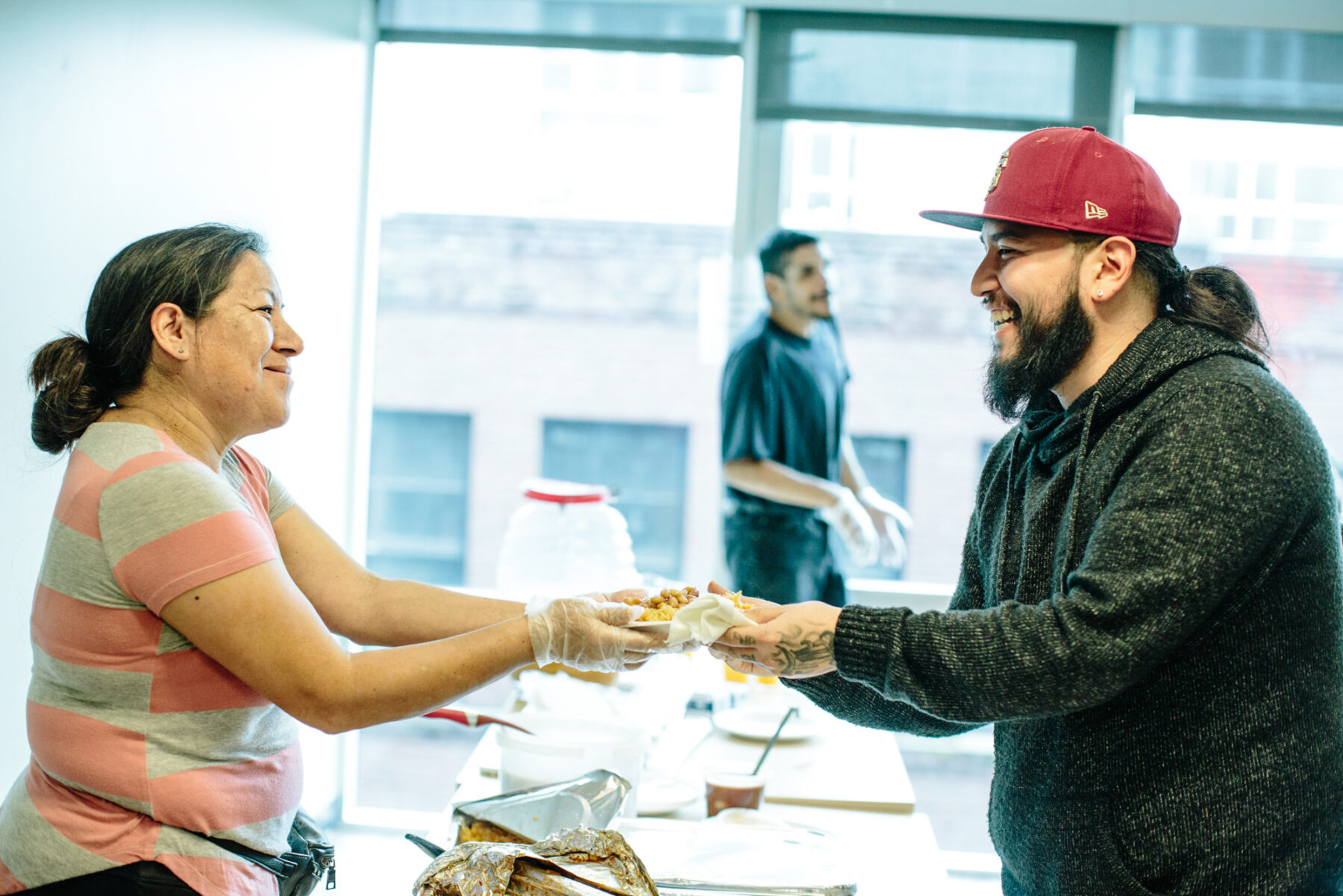
“The foundation allowed us to bring our group there. So we grew up with the San Francisco AIDS Foundation, and the foundation grew up with us,” he said.
“San Francisco AIDS Foundation learned how to engage with Latinos through [Castillo’s] Thursday group,” said Jorge Zepeda, who currently serves as SFAF’s director of Latinx Health. “El Grupo was the first safe space that was all-inclusive for people living with HIV and AIDS. And that was [Castillo’s] home. At that time, there were no services for people living with AIDS.”
Zepeda remembers that in the early days of El Grupo, the focus was on grief, loss, and finding a welcoming place for support. After the advent of protease inhibitors, the group shifted its focus to ‘what’s next?’
“At the beginning, most members were people living with HIV. That has really shifted over time,” said Zepeda. Now, we’re an intergenerational group of Spanish- and Mayan-speaking community members who are interested in helping each other–and our communities–thrive. We are here to help each other.”
Latino Programs hosts support and educational groups, and provides one-on-one risk reduction counseling, case management, and PrEP navigation. Members also play an active role in engaging the community at large as “promotores,” or community health workers.
“I’m proud of our Promotores program,” said Zepeda. “It has gotten stronger and stronger, with more and more people participating. Educators are able to go to more and more spaces, and work with community to educate them about HIV and Covid-19.”
“One of the main gifts I’ve received from El Grupo has been a wonderful community and family,” said Jesse Flores Gutierrez, a community member who joined the group several years ago. “It is a safe haven, a community, a family, where we can speak very openly and confidently–and receive such care, humor, and empathy in return.”
Commemorating 40 years
Join us every month in 2022 as San Francisco AIDS Foundation marks 40 years of service to the community.
On this occasion, we take a look back and share our storied history of leadership in HIV prevention, education, advocacy, and care, and HIV history in San Francisco and the Bay Area since the beginning of the epidemic.
As we look back on our history, we approach the future with hope, and with a renewed sense of all that our passion and ingenuity can bring to enact positive change in our community. We will act in bold and brave ways to reach an end to the AIDS epidemic, and ensure that health justice is achieved for all of us living with or at risk for HIV.
After 40 years, we will not lose sight of our commitment to our community, and our vision for a brighter future.






